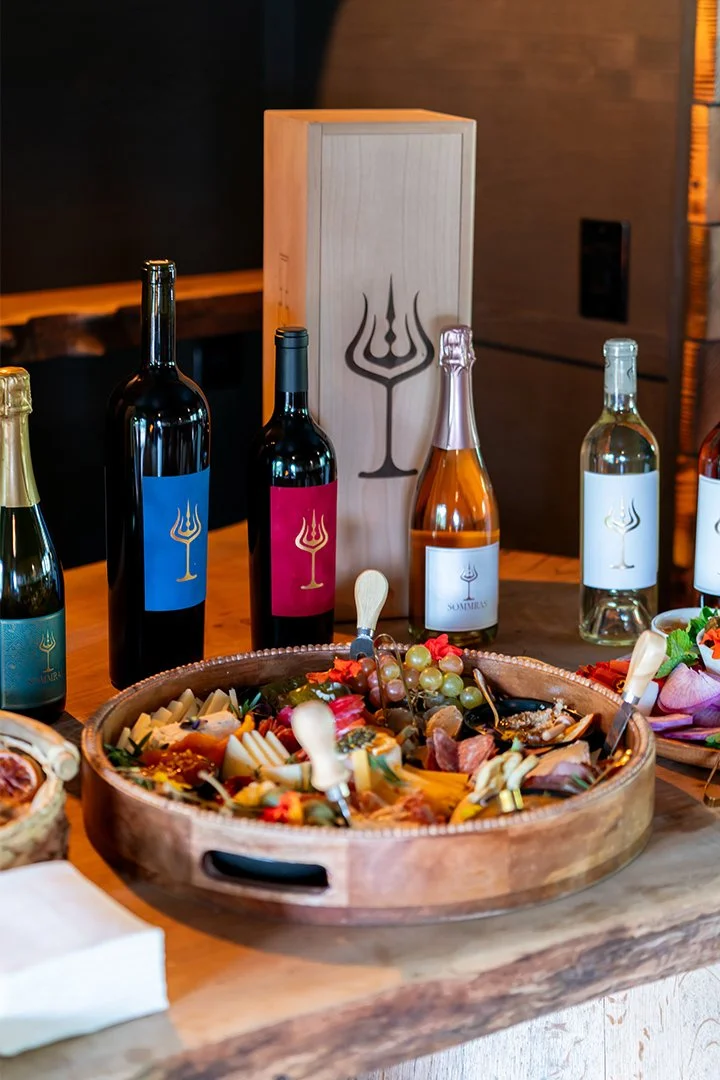Sommras - Voted One of Napa’s Top Smallest Producers Worth Seeking Out
By Jim Silver
Look up the Napa County Micro-Winery Ordinance (March 2022), which defines a micro-winery as a producer of 201 to 5,000 gallons of wine annually (or from 85 to 2,100 cases), and you’ll find that only 2 of them, so far, may legally receive visitors. Still, there are many, many tiny producers here in Napa Valley that make (let’s say) less than 500 cases, and to be honest, they’re pretty good, too. Different than what you might expect.
To me, a Burgundy-phile, the ideal micro-winery is a little house, a little cave, a little vineyard, and 24 barrels of Chambolle-Musigny. If you are making two thousand cases of Beckstoffer’s To-Kalon and Dr. Crane wines selling for 300 dollars a bottle, that’s not a micro-winery. That’s a seven-million-dollar-a-year business. The County, for all the good that it does, really has difficulty determining what drives the wine business or what a winery business should look like. When everything was sold to wholesalers fifty years ago, the idea of DtC was unheard of and unnecessary to regulate. When wineries realized decades later that there were no profits left in wholesale and that survival meant engaging all the DtC, there was the County to all but stop them from growing, placing difficult-to-regulate, difficult-to-justify limits on visitation so as not to disturb the neighbors’ peace and tranquility. No need here to rehash or debate the two sides to this, one being, “This is a farming community, we make wine here, and sometimes we need trucks,” and the other being, “Napa was so much better before all the tourists came.” It almost doesn’t matter where you stand now because the hippies who bought their ranches between 1968 and 1976 closed the door behind them, leaving less and less room for smaller growers and producers but opportunities for their kids if they were willing.
I don’t think we’ll get to a point like they used to have in Europe, for example, where tiny growers brought their grapes to the cooperative in exchange for finished wine from last year. Wouldn’t that be quaint in Napa? But alas, the aforementioned door-closing hippies also got older and more protective and gave us the 1990 rules that made new wineries on parcels of no less than 10 acres. The aforesaid micro-wineries are also required to be on 10 acres. Now, I’m not an accountant, but if you own ten or more acres of contiguous plantable land in Napa, you’re probably doing okay or better. That certainly doesn’t make them bad people; just lucky to have either gotten here early or have a deeply held passion for producing good wine. There is a rumor going around that Napa is dominated by the ultra-wealthy and corporate interests. Maybe, but the artisans are still here, working hard, and working around regulations – so don’t think that they don’t exist. Some of them are quite good and deserve some attention.
More than most people, I know how very hard it is to sell wine, even when it’s from Napa, even though it got a 99 from Parker, and even though it’s beautifully packaged – can you imagine how hard it is to sell your micro-production that no one’s ever heard of? How do you get your name out there, and how do you find a following without the ability to conduct traditional DtC and with no chance whatsoever of decent wholesale representation? Well, I have written a new book about that, and it’s coming out very soon. You can buy it with this button below. You’d be doing me quite a favor if you did.
So much is written about, and so much attention is paid to the great “cult” producers of Napa, like Scarecrow, Tusk, Carter, and Screaming Eagle. And there are equally interesting projects driven by Philippe Melka, Thomas Brown, and Aaron Pott that always get a lot of ink and great scores. Let’s venture out into the unknown instead, at least for today. While you’re waiting for your Realm allocation to arrive, let me introduce you to some fantastic tiny producers of Napa Valley wine you might want to check out:
2021 SOMMRAS Estate Cabernet Sauvignon Atlas Peak – Just 4 barrels made, that’s less than a hundred cases. The charming label is a little over the top, but that’s cool. Excellent color. The nose is aggressive, to say the least – a cacophony of mushrooms, spices, green and pink peppercorns, soft, ripe black plums and plum skins, musky blackberry pie, tree bark, forest aromas, and wild, brambly, garrigue or chaparral on a hot day aroma. In the mouth, the flavors are tamer, statelier – a stand of blackberries, Santa Rosa plums, cassis, and currants, and then there’s a currant-like acidity, too. Pencil shavings, road tar, and bay laurel round it out. Heady. It’s intellectually stimulating and reflective of the terroir – a little bit of Napa’s wild side coming out. It drinks like Atlas Peak looks. Try this wine. But also get in your time machine and try their 2022 Estate Atlas Peak Cabernet Sauvignon, which reminded me of a Stag’s Leap Wine Cellars wine from somewhere between 1979 and 1983. Or their 2022 Estate “Tuscan”, which is just four barrels of Cab and Sangiovese blended, heavy on the Cab. It’s an easy drinker for pasta night, with a lot of wild Napa character. This is a winery to watch.
Read the full article here.

